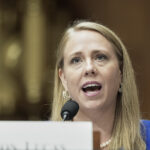A.M. Best Co. has just released a new study of the U.S. property/casualty industry in the past decade, which concludes that it has “shown resiliency and improved risk management amid extraordinary events.”
The announcement noted that “since 1969, this business segment has experienced wide fluctuations in annual impairment rates. The common denominator among property/casualty financial impairments is a diminished operating environment, with impairment peaks often triggered or exacerbated by external factors affecting underwriting or investment results. Still, despite recent near-term peaks in impairment rates, such events remain relatively rare.”
Best reached its conclusions after examining 871 financially impaired P/C insurance companies, dating back 34 years. Best’s Insolvency Study, Property/Casualty U.S. Insurers, 1969 to 2002 is an update to the landmark insolvency study first published in 1991. The new research provides a broader base for analyzing the causes of financial impairment than ever used before.
The study’s objectives “were to establish a more thorough understanding of insurer financial impairments and to validate the procedures and philosophy behind a Best’s Rating. The current study produced overall findings that were in keeping with those of the earlier study, including:
— The frequency of financial impairments tended to move in tandem with the factors affecting company earnings. More than half the impairments were caused by deficient loss reserves/inadequate pricing or by too-rapid growth. Often, financial or underwriting shocks pushed already vulnerable companies into impairment.
— The predictive value of a Best’s Rating in identifying the more vulnerable companies was confirmed. Best’s Rating system identified nearly all companies approaching impairment by significantly lowering or eliminating their rating.
Best indicated that it had “formally followed more than two-thirds of the 871 financially impaired insurers covered by this study for at least one year prior to impairment. The remaining companies were not followed.” It provided “letter Financial Strength Ratings, or the equivalent, to 321 of the 871 impaired companies. The other followed companies either requested that their rating not be published or did not meet A.M. Best’s financial or reporting requirements for a letter rating.”
The study was conducted over a long enough period of time, beginning in the late 1960’s, for the industry to have experienced “both the best and the worst of operating environments. On the upside were four hard markets, five economic booms and the greatest bull stock market in history. On the downside were three soft markets (the last one of unusually long duration); a series of the most costly natural and man-made catastrophes in history; six recessions; extremes of inflationary pressures and interest-rate gyrations; and two major bear stock markets. Also contributing to the downside were factors such as an increasingly litigious society, enormous environmental liabilities, global competition and state-mandated rate rollbacks.”
Surprisingly, despite the roller coaster pattern of substantive events, Best found that “underwriting trends still follow historical patterns, and impairment rates in 2000 to 2002 spiked, albeit short of the record high set in 1991. Even so, impairments remain relatively rare—about one in 200 companies in more stable times and one in 50 during more difficult periods. Over the 34 years of the study period, impairments averaged 25.6 annually, with an average annual impairment frequency of 0.80 percent, or one in 125 companies.
The study found that a majority of the financially impaired companies tended to be stock companies, “where the impairment frequency was about four times (1.2 percent vs. 0.3 percent) that of mutual companies. Most impaired companies were small, as measured by premium volume, and the majority wrote commercial lines–which experienced more volatile underwriting results and lower profitability–particularly during the 1980s and 1990s.”
Best identified the primary causes of financial impairment in 562 of the 871 companies. The leading cause of impairment, at 37.2 percent, was “deficient loss reserves/inadequate pricing. Rapid growth, which is closely related to deficient loss reserves, was the second highest cause of impairment, at 17.3 percent. Alleged fraud was the third-highest identified cause (8.5 percent).
The rating agency rather pointedly added that, “with the possible exclusion of catastrophe losses,” it “believes all the primary causes of insolvencies in this study reflected some form of mismanagement.”
BestWeek subscribers can download a free printed copy of the full 100-page special report, “Best’s Insolvency Study, Property/Casualty,” and a spreadsheet file of the report data at www.bestweek.com.
Nonsubscribers can download a printed copy of the full 100-page special report for $250 or a combination of the printed report plus a spreadsheet of the report data for $500 at www.bestweek.com.
Topics Trends Property Casualty
Was this article valuable?
Here are more articles you may enjoy.


 Stepbrother Suspect in Cruise Ship Death Says He Doesn’t Remember Anything
Stepbrother Suspect in Cruise Ship Death Says He Doesn’t Remember Anything  Head of EEOC Urges White Men to Report Discrimination
Head of EEOC Urges White Men to Report Discrimination  Top National Insurance Journal Stories of 2025
Top National Insurance Journal Stories of 2025  Longtime Motel 6 Spokesman Tom Bodett Settles Lawsuit Against Chain
Longtime Motel 6 Spokesman Tom Bodett Settles Lawsuit Against Chain 

